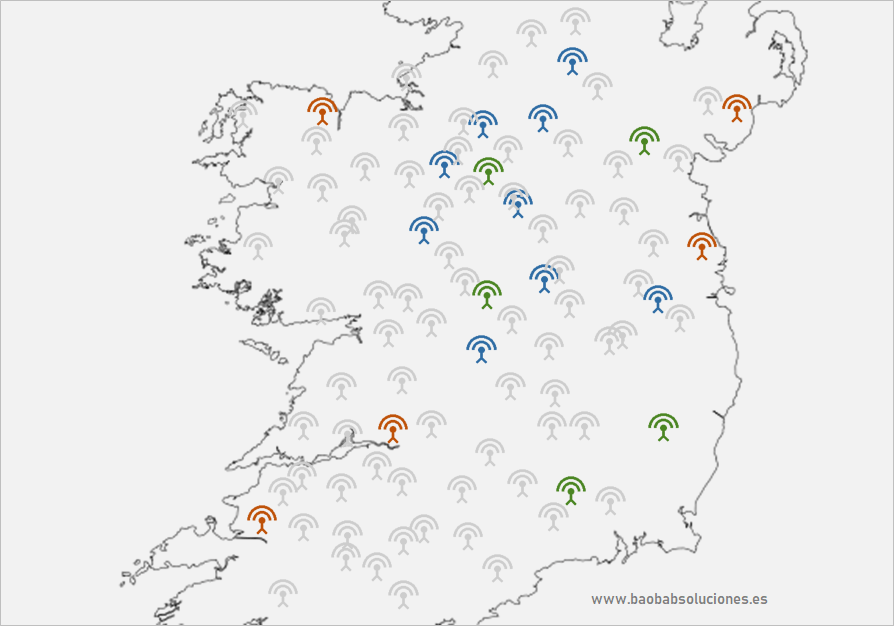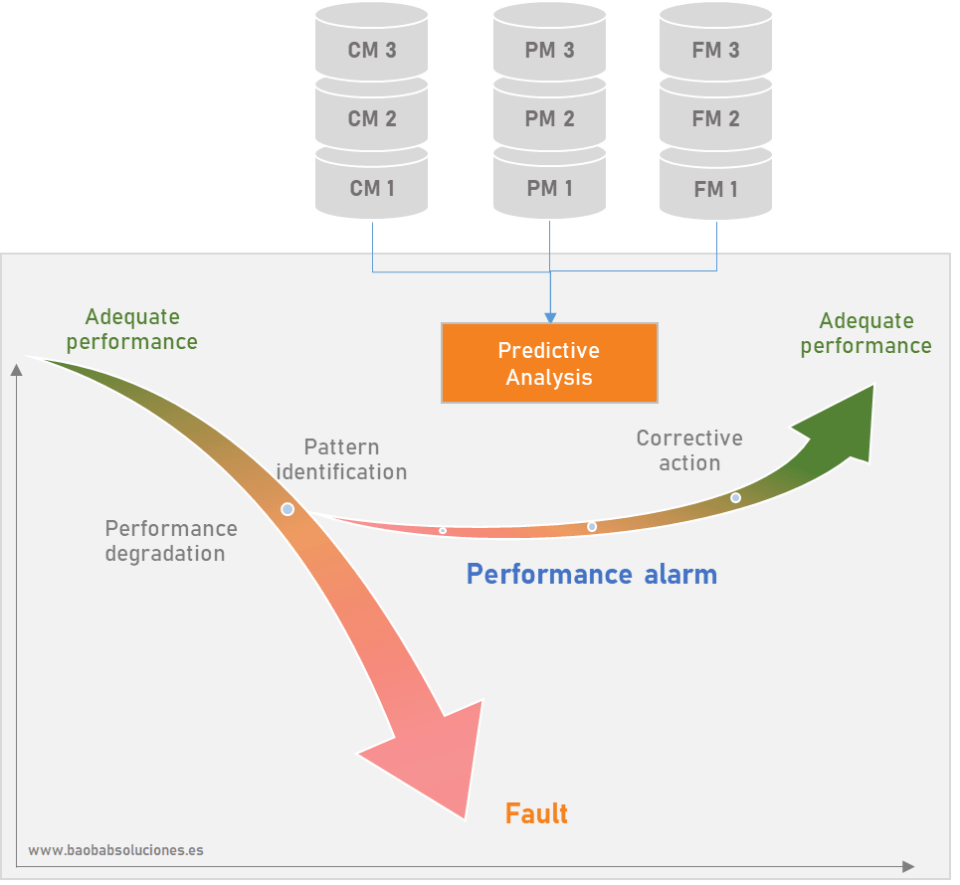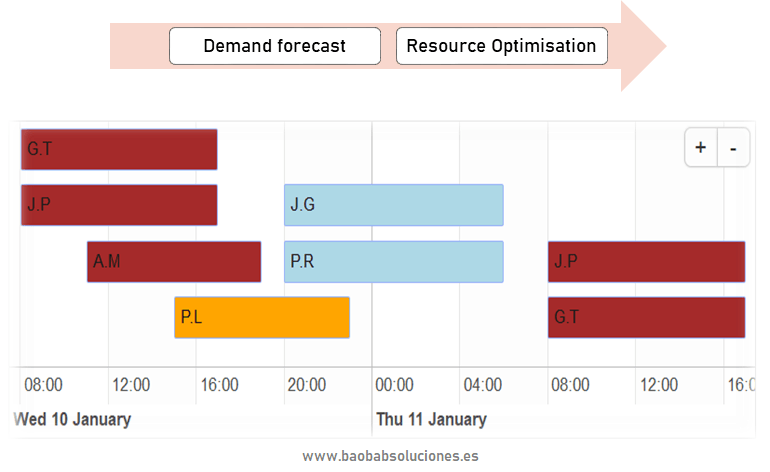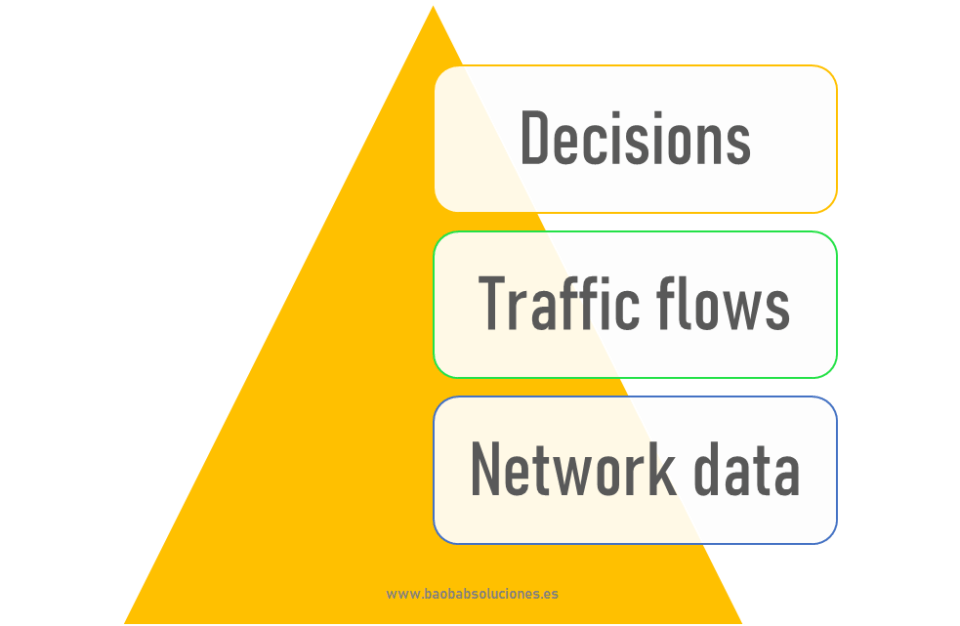
Since we started our Telecommunications business unit last May, we have met a few service providers all Europe over with a growing interest in advanced analytics and automation.
By advanced analytics we mean machine learning, artificial intelligence and prescriptive analytics, and there are several reasons why they are pushing them.
- Reduce costs and complexity in daily operations.
- Maximize ROI
- Complement their IoT and Digital Transformation portfolio for corporate customers
- Increase revenues
- Monetize their data.
Here are some of the use cases we have encountered as a result of our interaction with the industry.
Cybersecurity
A British operator is using Artificial Intelligence to support their cybersecurity team by means of the following use cases:
- Detection of known threats, using known threat data patterns to detect new occurrences of old threats.
- Detection of new threats. Unsupervised machine learning algorithms can identify suspicious behaviour (outliers) and detect new attack patterns.
- Automated Security Response to detected threats for which a response was defined in the past.
Task automation
5G and IoT will bring an explosion of data and connected devices that, in combination with data price pressure, will render the traditional network design and operations obsolete.
Some operators have already created applications based on AI to automate the design of optical fibre layouts, which require multiple design considerations and planning rules to be taken into account and demand hours from an experienced engineers to complete. Thanks to the new applications, the layouts are finished in minutes. We can expect similar applications in the future.
Efficient radio network design
Radio networks are expensive because of mast site leases. According to Information Age, back in 2016 in the UK alone there were around 52,000 mobile phone masts with an average rent of £4,946 for rural masts and £11,346 for urban mast rent. Hence the interest of operators in reducing their lease bill.

Prescriptive analytics allow, given a set of existing and candidate sites and coverage and capacity goals, to create a mathematical model that finds the minimum cost network plan (in terms of CAPEX and OPEX) while meeting all goals.
Operators are working on models that can ingest the network plan and coverage footprint for each site from the planning tool, enrich them with costs and traffic demands, explore in an intelligent manner the space of possible solutions and recommend the next best actions (install a new node on a potential or an existing site, or upgrade capacity) to satisfy traffic and coverage demands.
Prescriptive network optimisation
Radio network optimisation engineers know that many sites look and perform in a similar way. Operators are beginning to adopt advanced analytics solutions in order to find sites that share similar contexts, configuration and usage patterns, and pick the parameter values that deliver better performance, thus segmenting and creating parameter templates based on actual experience, not very much unlike Golden Clusters before network-wide changes.

Predictive maintenance and customer call reduction
It is very common for elements in any system to show degradation before a fault event, which may be obvious in some cases, but no so much so when such degradation is subtly spread across different domains.
Predictive analytics is based on finding patterns in complex datasets. Operators know they can apply these techniques across different domains in their history of performance indicators and configuration parameters during periods leading up to fault events, and raise the flag whenever the occurrence of such patterns is detected.

IPTV is a good application for this case because its adequate monitoring requires data from diverse sources: set-top box (STB) usage, configuration and performance data, network KPIs, network alarms or service tickets. Clustering techniques in this domain have proven effective to describe the most significant factors for service degradation.
A very interesting application is the use of customer care calls as proxy for poor QoE. By searching for common traits in their data and measuring the occurrence of customer care calls, operators can discover up to 10 customers that might have called but didn’t for each one that called, anticipate future calls, reduce bad customer QoE and churn due to technical reasons.
What-if analysis
Operators often find the need to evaluate, with no time or resources to run field trials, the impact of potential of scenarios that may occur in the near future. For example: a Spanish operators once asked us “how would my Fixed Broadband customers’ traffic pattern change if I doubled up their contract speed and how would this affect my network?”.
The answer to the question is not obvious for two reasons: we know that traffic does not immediately follow available bandwidth and not all network elements would be equally affected by a traffic increase.

Simulation tools and techniques are used to build digital replicas of complex system where we can change conditions (namely maximum allowed speed), observe the output and quantitatively compare results, quickly and safely.
Prescriptive Fault Management
“Our Incident Management System contains all of our knowledge.” – an operator once told us. They were using data clustering techniques to take advantage of that knowledge and provide the human in charge with the most adequate solution to new tickets.
The technique is based on the fact that trouble tickets usually move from one team to another until they are solved by the “last owner”. It is true that data is often dirty, incomplete or simply wrong, but combination of data cleansing techniques followed by a deep analysis of all the steps followed by each ticket allow to suggest shorter paths to solve the issue.

Workforce Management
Labour intensive tasks require careful planning and dimensioning in order to meet goals and customer expectations. Field engineers for example need to be available to do both planned work like a customer appointment or commissioning a site, AND unplanned work like a customer-affecting incident with associated Service Level Agreements. These engineers are often highly specialized and an unexpected accumulation of work would force them to drop one of the tasks and disgruntle a customer.
Operators know that in situations like this, the combination of demand forecast and resource optimisation techniques provided by predictive analytics and operations research, can deliver double digit improvement in the adequacy of the number of workers to the demand and reduce the time managers dedicate to scheduling.

Predictive analytics sift through past data and find patterns in demand that can be projected into the future. Then resource optimisation comes into play to allocate the necessary resources at the exact time-slot that they are needed, considering all key factors such as skill, contractual conditions, preferences, time available, etc. These solutions also allow quick adjustment to sudden changes in conditions, such as last-minute requests, unexpected changes in availability.
IoT and Digital Transformation
Network operators are extending their services portfolio beyond connectivity in order to provide end-to-end solutions to their corporate and industrial customers.

The Smart Factory use case is an excellent example where operators not only connect all elements of a factory by including sensors, IoT platform and Cloud services but they also include Advanced Analytics to support applications such as predictive maintenance, workforce management, resource allocation, etc…
Data monetization
Operators sit on the massive amount of data that their networks collect on customer mobility. They are monetizing on it in the retail, transportation and advertising verticals by providing highly segmented information on traffic flows that can be used to decide on e.g. hub location, traffic dimensioning or ad impact.
Typically operators offer aggregated datasets that corporate customers use in their decision making. However, they are finding more and more often that their customers would like to receive answers to their questions: where do I need to place my billboards in order to maximize my ROI? Where do I need to open my stores? These are typical examples of prescriptive analytics applications, where an algorithm is used to maximize the return of a limited resource.

Service providers are in effect partnering up with prescriptive analytics firms to fill the gap between data and solutions.
Conclusions
The prescriptive analytics market is expected to grow over 25% YoY until 2025. 5G, IoT and downward price pressure are forcing operators to optimize prices and costs, and find new revenue streams. When operators consolidate their CDO organizations we will see an explosion of applications based on advanced analytics.
Baobab soluciones is a leading consulting firm in customized prescriptive analytics solutions for Fortune Global 500 organizations, based in Madrid.
For business inquiries please contact info@baobabsoluciones.es



